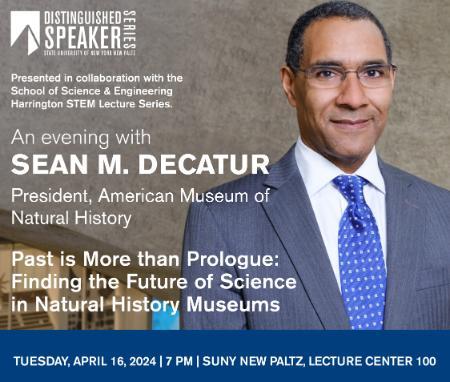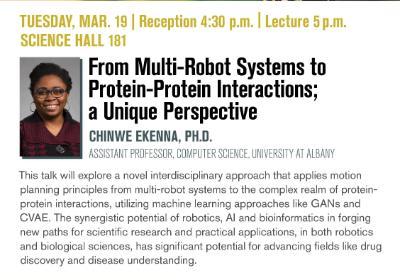Click on the image or title to view a recording:
Tuesday, November 14
Immunology or Molecular Biology? Insights Into Cytosolic DNA Sensing
Brianne Barker, Ph.D.
Associate Professor and Chair, Biology Department
Drew University
Cytosolic DNA sensors including cGAS, IFI16, and AIM2 have been shown to be key innate immune mediators of antiviral responses. The ability of these proteins to bind genomic or mitochondrial DNA from damaged cells as well as pathogen DNA raises questions about these proteins in cellular homeostasis as well as innate immunity. In this talk, data relating to the regulation of innate immune DNA sensors and the roles of these sensors in diverse cellular processes will be described.
Tuesday, October 24, 2023
The Appalachians and How They Got That Way: One Billion Years of Earth History Beneath our Feet
Maureen Long, Ph.D.
Bruce D. Alexander ’65 Professor of Earth and Planetary Sciences
Yale University
The geology of eastern North America records a fascinating history of fundamental plate tectonic processes, including subduction, volcanism, mountain building, erosion, the accretion of various geologic terranes, and continental rifting and breakup. This history is reflected in the bedrock geology that we see at the surface; however, the deep structure of the crust and uppermost mantle beneath our feet also holds clues to the processes that have affected eastern North America over the past billion years. While the deep Earth is not directly accessible to us, it can be studied using seismic waves from distant earthquakes that sample the rocks beneath our feet. In this talk, I will introduce the methods that seismologists use to image the crust and upper mantle and will discuss what we have learned about the deep structure beneath the present-day Appalachian Mountains as well as how it informs our views of plate tectonic history and processes.
Tuesday, Sept. 19, 2023
Measuring the Polygons
Dr. Alexander Borisov
Associate Professor, Department of Mathematics and Statistics
Binghamton University
A basic fact from the elementary Euclidean geometry is that all triangles can be completely determined by three angle/distance measurements. Also, two measurements are clearly never enough. So how many measurements are needed for a quadrilateral? For most quadrilaterals the answer is 5. But there are, surprisingly, many "special" quadrilaterals, including all squares, rectangles, and rhombi, that can be completely determined by just 4 measurements. And for the polygons with n vertices the answer is (2n-3) in general but can be as low as n for some special ones. The proofs are almost as basic as the questions themselves, except for proving that fewer than n measurements are never enough. That proof does require somewhat more advanced mathematics, so I will only describe the main idea behind it. While most of the talk will be about plane geometry, I will also discuss related three-dimensional questions and some real-world, and engineering, connections. This talk is based upon a portion of a 2010 joint paper with Mark Dickinson and Stuart Hastings, published in the American Mathematical Monthly, that received the Lester R. Ford Award for mathematical exposition.
April 4, 2023
Using Information Theory to Uncover Space Wonders from the Sun to Saturn and Beyond
Dr. Simon Wing
Physicist
Johns Hopkins University
A grand tour of space wonders from the Sun to Saturn is presented, including sunspots, aurora, space storms, space weather, and strange radio waves emitted by planets. Most of these phenomena are manifestations of complex nonlinear physical systems. These systems can be characterized as input-output or causal-effect problems in which multiple input variables can be linearly and nonlinearly causally related to multiple output variables. Isolating the effect of an individual input variable or driver can be challenging. Likewise, identifying the response to a particular input variable can be nontrivial in such system. Information theory can help untangle the drivers, describe the underlying dynamics and response, and offer constraints to modelers and theorists, leading to better understanding of the system. To illustrate the methodology, a few examples from space are presented: (1) identifying causalities in the solar dynamo problem; (2) untangling the drivers of the solar wind–radiation belt system; and (3) identifying the source of the periodic radio wave emissions at Saturn. Implications to other stellar systems and exoplanets are discussed.
March 7, 2023
The Mystery of Turbulence: A Mathematician’s Perspective
Dr. Vincent Martinez
Assistant Professor, Dept. of Mathematics and Statistics, CUNY Hunter College
Turbulence occurs everywhere, from the mundane to the spectacular, in smoke emanating from a pipe or the wake of a fastball, to the gas ejected from black holes that helps to form galaxies around us. Despite its ubiquity and the fact that the equations of motion that describe how a fluid flows were written down more than 200 years ago, turbulence remains one of the great unsolved problems of physics. This talk will present a short account of the study of turbulence and the fundamental issues we are confronted with from a mathematician’s point of view.
February 28, 2023
What Do Bodies Think About? Bioelectricity and Basal Cognition During Morphogenesis
Dr. Michael Levin
Distinguished Prof., Biology and Biomedical Engineering, Tufts University
How do cells build a complex body during embryogenesis? How do some organisms such as salamanders and planaria re-build damaged organs throughout their lifespan? These questions are not only critical for the future of regenerative medicine but are closely tied to the most profound question of all: how does a complex mind emerge from the physics of cellular processes during the brief process of development? In this talk, I will discuss the notion of basal cognition - the scaling of decision-making, memory, and goal-directedness from cells to whole organisms. I will discuss our work on bioelectric networks (among all cells, not just neurons) as the cognitive glue that binds cells toward common purpose in creating and repairing complex anatomies. I will show how the genomically-specified hardware of cells gives rise to a remarkable, reprogrammable software that controls growth and form, and how this software can be exploited for repair of birth defects, regeneration of damaged organs, cancer suppression, and even the construction of new synthetic life forms.










